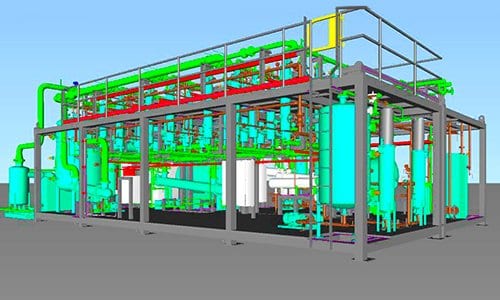
You may be using a standard design specification sheet or bid package format to help with this issue, but often there is no way around sitting down and going through the numbers.
But it’s often the hidden assumptions in process quotes that cause problems down the line. You might be able to get a pretty good comparison of the facts and figures submitted to you, but do you truly understand how those numbers were derived?
What You Can’t See CAN Hurt You
It’s not just in the process system cost quoting process where the danger of design assumption lies. Throughout the entire design process, engineers have to make judgment calls about lots of system aspects in order to move your system forward. If these are not communicated to you in a digestible manner, they will become costly mistakes later down the line.
For example, assumptions about fluid composition – the type and size of the media passing through the system – can inadvertently lead to incorrect equipment selection. Replacing pumps after startup is much more expensive than discussion this assumption during design. Similar design assumptions that are not brought to light early can cause major redesigns, prices changes, or even systems that fail to startup correctly later.
Using a Design Basis to Bring Assumptions to Light
A design basis can do exactly that; clearly document those hidden assumptions so they don’t come back to bite. A design basis is a document that your process design firm should provide during process quoting and system design that outlines any grey areas in system requirement and lists assumptions that were used to design that area or determine process system cost.
For example, if you aren’t sure exactly how thick your fluid will be at certain spots, the design basis would list an assumed thickness – based on your best guess and a design firm’s practical experience – which your system is designed around. As more data is collected on that point, designs can be updated to reflect that.
Common undocumented design assumptions include:
- Heating Requirements & Available Utilities – there is a big difference between 40-degree chilled water and 55-degree chilled water. If a system is going into a new area of the plant or if you are unsure what utilities are available, your design firm will have to make assumptions on this point. You may also want to check reality vs. hypothetical utilities. Is the chilled water actually 40 degrees where your process skid will be installed?
- Operating environment – depending on the type of process system you are designing, your design/build firm may assume the system is being installed outside – or inside. If there is not clear communication on this point, things that are designed to operate inside (for example) might be susceptible to freezing or overheating if placed outside upon installation. There can be similar problems in the reverse situation. A clear plan for the final resting spot is imperative to discuss with your designer, along with any environmental factors such as HVAC systems, HAZOP areas, flammables, special sanitary requirements, dust, etc.
- Fluid composition – We touched on this one earlier, but it is a common problem. Assumptions about both the viscosity and the state (solid, liquid, gas) of what will be in your process system at various points can cause huge issues. Even small particles of solids in a fluid can grid-lock a pump if it is not designed to handle them. It’s imperative that you thoroughly discuss the substances going into your process system and their properties through processing to avoid surprise process system costs.
It can be impossible to resolve some assumptions up front. The benefit of a design basis is that allows clear communication between your design firm and you. You’ll know what key assumptions they are making that might not otherwise be included in the process system cost or design documentation, and you’ll know how changes to those assumptions can affect things like price, project timeline, etc.
An established design basis should then be used to set design milestones and review points. Our goal at EPIC with any project is to meet your process system challenges with efficient quotes & designs that clearly spell out technical capabilities and ultimately lead to a process system that is fast-to-market and works right the first time. Developing and regularly communicating with a design basis is one of the many things we do to ensure project success.